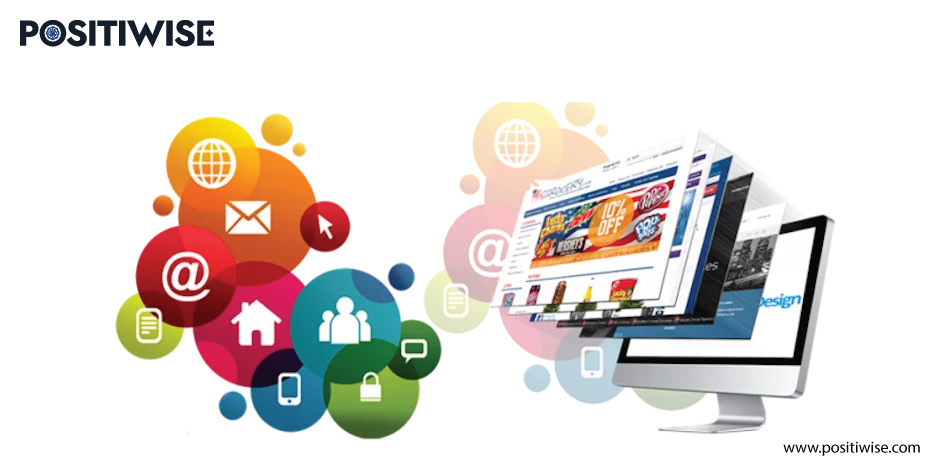Quick Overview:
In 2024, the crux of developing an extraordinary web application that captivates users and elevates business performance is finding the perfect equilibrium between functionality and user-friendliness. And to achieve that perfect equilibrium, you must choose the most appropriate and best frontend framework for your project. But, choosing one can be a hectic task – as so many options are available. So what to do?
Fret not! This article will assist you in making an informed decision as we will explore key factors like popularity, usability, security, future support, etc., that you should analyze and carefully consider while selecting the best frontend frameworks for your project. But, before we do that and start with all that, it would be better to clearly understand the frontend framework, as in – what exactly is it?
What are Frontend Frameworks?
Frontend frameworks are a collection of pivotal tools, libraries, and pre-designed components. These frameworks come equipped with reusable components (code snippets) for Javascript, CSS, and HTML that developers can reuse in “n” number of projects.
Frontend frameworks streamline the development process and ensure smooth transitions and a more app-like feeling during user interactions. They are indispensable tools that empower developers to build engaging and efficient digital experiences, making the process of web application development more structured, organized, and user-friendly.
Key Considerations for Choosing the Top Front-End Frameworks 2024
Popularity
The popularity of the best front-end frameworks in 2024 is a strong indicator of their reliability and widespread adoption within the developer community. A popular framework is likelier to have a more extensive user base, translating to a more active and supportive community.
It implies that abundant resources, such as tutorials, documentation, and third-party libraries, will make it more manageable for creators or developers to get started and find solutions to standard problems. In addition to all this, popular frameworks are more likely to acquire frequent updates and modifications, ensuring they remain current with the latest web development trends and technology.
Core Functionalities & Features
When selecting the best frontend frameworks, consider their core features and functionalities like routing, state management, and UI components – as these are paramount for building modern web apps quickly and easily. Check for availability and support of features like HTTP connectivity, form processing, request validation, and templates.
The availability of these core functionalities can significantly impact development speed and ease, as developers won’t have to reinvent the wheel or rely heavily on external plugins. Also, analyze the framework’s features in the context of your website needs to make the best choice.
Usability
When choosing a frontend framework for your project, considering usability is of utmost importance. The framework’s characteristics, ease of use, potential deficiencies, and drawbacks should be thoroughly evaluated to ensure it aligns with your project’s demands. While prior experience with a framework can be advantageous, newcomers can seek support from the community or enlist the expertise of mobile app development companies for valuable insights.
To gain a deeper understanding, explore its IDE, plugins, CLIs, and scripts practically, or you can also develop a Minimum Viable Product that can aid in determining whether the framework suits your project or not.
Server-side Rendering (SSR)
SSR is essential, particularly for SEO and initial page load time. SSR renders the web page on the server before sending the fully rendered HTML to the client, making it more search engine-friendly and improving the perceived loading speed for users.
A frontend framework that offers built-in SSR capabilities or easy integration with SSR libraries can provide significant performance benefits, especially for content-rich or dynamic web applications.
Flexibility
In web development, each application has distinct needs. A flexible front-end framework allows you to customize the architecture to meet those requirements. It avoids strict rules, allowing you to make personalized choices based on project goals. This flexibility strikes a balance between guidance and creativity, making it suitable for projects of all sizes, from small prototypes to large-scale applications.
With a flexible framework, you can craft tailored solutions that precisely fit the project’s unique objectives, ensuring top-notch web applications. Therefore choose the frontend framework that provides you with the maximum flexibility.
Learning Resources
Access to comprehensive learning resources related to the frontend framework you choose is of utmost importance, especially for those new to a framework. When you embark on your journey with a new front-end framework, having high-quality tutorials, guides, and active community forums at your disposal proves invaluable. These resources play a pivotal role in helping you swiftly grasp the framework’s fundamental concepts, best practices, and advanced techniques.
Armed with such knowledge, you can confidently navigate the intricacies of the framework and accelerate your learning curve. So, choose the framework that provides you with ample learning resources.
Two-Way Data Binding
Two-way data binding simplifies keeping the data in the UI in sync with the underlying data model, empowering developers to craft user-friendly and high-performing web applications. When evaluating frontend frameworks, considering this feature becomes essential to ensure a smooth and dynamic user experience while simplifying the development process for the project.
Responsive Components
With the growing popularity of mobile devices, web applications must adjust effortlessly to different screen sizes. When selecting a frontend framework, prioritizing responsive components will significantly enhance the success of your project as these components allow you to create user-friendly interfaces that can work on any device. Hence, check whether the frontend framework you are opting for allows the creation of responsive components.
Ease Of Integration With Other Libraries
Web development often involves using various third-party libraries and tools to extend the application’s functionality or solve specific problems. A frontend framework that seamlessly integrates with commonly used libraries allows developers to leverage the best tools available without facing compatibility issues or complex configuration processes.
Easy integration enhances development efficiency and reduces the likelihood of introducing conflicts between different libraries. So, choose a framework that can be integrated without any hassle.
Security
Security is a top priority in custom web application development. When selecting a frontend framework, consider its security features and track record in addressing security vulnerabilities. A framework that follows best security practices and has a responsive team that promptly addresses security concerns can give you confidence in the application’s safety and data protection.
5 Best Frontend Frameworks in 2024
- React
- Angular
- Vue
- Svelte
- Ember
Let’s discuss above most popular frontend frameworks in detail.
#1 React
React.js, developed and maintained by Facebook, is a trendy frontend framework known for its component-based architecture and efficient rendering through the Virtual DOM. It allows developers to build complex user interfaces by breaking them into reusable components, promoting better code organization and maintenance.
Pros of React
- Widely adopted and supported by a vast community.
- Virtual DOM enables efficient updates, leading to better performance.
- A rich ecosystem with numerous third-party libraries and tools.
- Component-based architecture promotes code reusability and
maintainability. - Excellent documentation and frequent updates from Facebook.
Cons of React
- The steep learning curve, especially for developers with no knowledge of Javascript.
- React’s ecosystem evolves quickly, potentially leading to compatibility issues.
- Boilerplate code required for setting up new projects.
- Frequent updates might necessitate changes in existing codebases.
- Limited built-in features require additional libraries for complex functionalities.
#2 Angular
Angular, developed by Google, is a comprehensive frontend framework that enables developers to build dynamic and feature-rich single-page applications. With its powerful two-way data binding, changes to data in the model automatically update the view and vice versa, making real-time updates efficient. Angular’s CLI simplifies project generation and helps manage “n” number of development aspects.
Pros of Angular
- Developed and maintained by Google, ensuring long-term support.
- Powerful two-way data binding simplifies real-time updates.
- Comprehensive CLI for project generation and maintenance.
- Robust dependency injection system for efficient code organization.
- Extensive documentation and a mature ecosystem.
Cons of Angular
- Complex syntax and steep learning curve.
- Larger bundle sizes compared to some other frameworks.
- Frequent updates may require substantial code changes.
- Performance can be an issue with huge applications.
- Limited SEO friendliness for single-page applications.
#3 Vue
Vue.js is a user-friendly JavaScript Framework that seamlessly integrates into existing projects. Its small bundle size and fast page rendering results in exceptional performance and a smooth user experience. The framework’s reactivity system also ensures automatic reflection of changes to data in the UI, making development easier and minimizing errors.
Pros of Vue
- Progressive framework, allowing integration into existing projects with ease.
- Simple and beginner-friendly syntax, promoting faster development.
- Small footprint and fast rendering speed, enhancing overall performance.
- Detailed documentation and a gentle learning curve.
- Versatile and highly customizable, adapting to different project sizes.
Cons of Vue
- Smaller community compared to React and Angular, leading to potentially limited resources.
- It may lack certain advanced features available in more mature frameworks.
- Integration with complex legacy systems might be challenging.
- A rapidly evolving ecosystem could lead to version compatibility issues.
- Fewer job opportunities compared to more established frameworks.
#4 Svelte
Svelte is a relatively new and innovative front-end framework that takes a different approach from traditional frameworks. Instead of using a virtual DOM, Svelte compiles components to highly efficient JavaScript code during build time, resulting in smaller bundle sizes and faster rendering. Its straightforward syntax and minimal boilerplate code contribute to a shorter learning curve and rapid development.
Pros of Svelte
- Compiles components to highly efficient vanilla JavaScript during the build, resulting in smaller bundle sizes.
- No virtual DOM overhead, leading to faster rendering and improved performance.
- Easy learning curve and minimal boilerplate code, enabling rapid development.
- A robust reactivity system automatically updates the DOM when data changes.
- Excellent documentation and active community support.
Cons of Svelte
- Smaller community and fewer third-party libraries compared to larger frameworks.
- Relatively new in the market, leading to potential uncertainties about its long-term viability.
- It may require a mindset shift for developers accustomed to traditional frameworks.
- Limited support for server-side rendering and third-party libraries.
- Limited tooling and IDE support compared to more established options.
#5 Ember
Ember.js is a dependable frontend framework known for its solid conventions and structure. It offers developers clear guidelines, making building scalable and maintainable applications easier. Ember has built-in tools for handling routing and data management, saving developers time and effort when building complex applications. Its commitment to backward compatibility ensures that updates and enhancements can be implemented without causing disruptions to existing projects, making it a safe and reliable choice for long-term development projects.
Pros of Ember
- Strong conventions and project structure for scalable and maintainable applications.
- Built-in routing and data management spreadsheet, streamlining development workflows.
- Comprehensive CLI for scaffolding and managing projects.
- Rich set of features out of the box, reducing the need for additional libraries.
- Stable and mature framework with a strong commitment to backward compatibility.
Cons of Ember
- Steeper learning curve compared to some other frontend frameworks.
- Larger bundle size compared to more lightweight options.
- Limited flexibility due to strict conventions, potentially hindering customizability.
- Smaller community and fewer job opportunities compared to some other frameworks.
- Documentation might not be as extensive as those of other leading frameworks.
Start Building Something Amazing Today!
Take your web development to the next level with a robust front-end framework.
Compare React vs. Angular vs. Vue vs. Svelte vs. Ember
| Feature | React | Angular | Vue | Svelte | Ember |
|---|---|---|---|---|---|
| Language | JavaScript | TypeScript | JavaScript | JavaScript | JavaScript |
| Rendering | Virtual DOM | Real DOM | Virtual DOM | Virtual DOM | Real DOM |
| Two-Way Data Binding | No | Yes | Yes | No | Yes |
| Component-Based | Yes | Yes | Yes | Yes | Yes |
| Learning Curve | Moderate | Steep | Easy | Easy | Moderate |
| Community | Large | Large | Large | Growing | Medium |
| Performance | High | Medium to High | High | High | Medium to High |
| Size of Framework | Lightweight | Large | Lightweight | Very Lightweight | Medium |
| Official CLI/Tooling | Create React App | Angular CLI | Vue CLI | Svelte CLI | Ember CLI |
| Reactivity System | Props and State | Two-Way Data Binding | Reactive Data Binding | Reactive Statements | Computed Properties |
Conclusion on Best Frontend Frameworks
Choosing the best Frontend Frameworks in 2024 implicates careful consideration of the framework’s popularity, core functionalities, usability, server-side rendering capabilities, flexibility, availability of learning resources, two-way data binding support, responsiveness to mobile devices, ease of integration with distinct libraries, security features & future support.
If you are still trying to decide which will be the most suitable frontend framework for you, consider seeking assistance from Positiwise Software Pvt Ltd. It is a reputable software development enterprise with over 10+ years of experience & can help you to make an informed decision.
Expert in Marketing Strategy and Brand Recognition
Jemin Desai is Chief Marketing Officer at Positiwise Software Pvt Ltd, he is responsible for creating and accelerating the company’s marketing strategy and brand recognition across the globe. He has more than 20 years of experience in senior marketing roles at the Inc. 5000 Fastest-Growing Private Companies.






